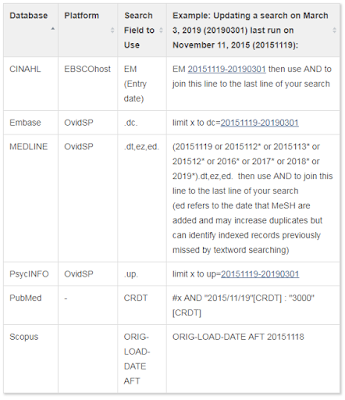Just after I started last Autumn, I was really excited to
have the opportunity to get involved with helping design and run the searches
for a few systematic reviews.
In the last few weeks, two of those systematic reviews have
been published! They are:
- Frailty Factors and Outcomes in Vascular Surgery Patients: ASystematic Review and Meta-analysis (Houghton et al., 2019)
- A systematic review investigating the identification,causes, and outcomes of delays in the management of chronic limb-threateningischemia and diabetic foot ulceration (Nickinson et al., 2019)
It’s great to see that not only are they now published, but
I’m very grateful that both authors chose to include me as an author too. It’s
incredible to look back at how many SRs we’ve helped with this last year at UHL – I’m
currently helping on my 17th!
Whilst the projects themselves were really interesting, it
was also a great learning opportunity for me as a new Clinical Librarian too.
In 2019, I’ve also had the opportunity to go on two courses on systematic
review searching. The main things I’ve learnt are:
- Whilst daunting for a perfectionist at first, once you’ve done a few, they’re the best thing! It’s really satisfying creating a sensitive strategy that fits the question well.
- Don’t be afraid to experiment with different databases, and with different fields.
- Keep open communication with requestors, and manage expectations. I learnt from my colleagues about the benefits of scoping strategies, and now I use them every time. They really help gauge whether I’ve understood the question correctly, and pin down what the requestor wants, as well as giving them a good idea on result numbers.
- Run tests to check the key articles have been found. This was emphasised on the courses, but I have also found it reassures requestors, and helps you identify any terms that might have been missed.




